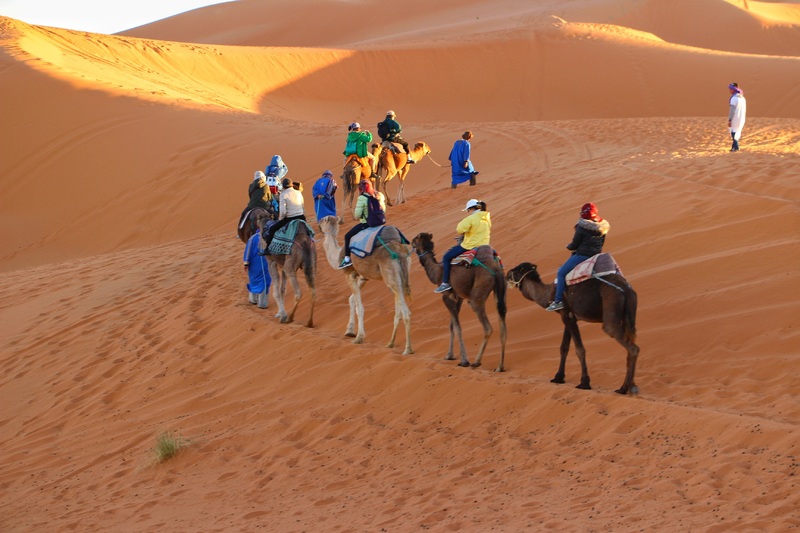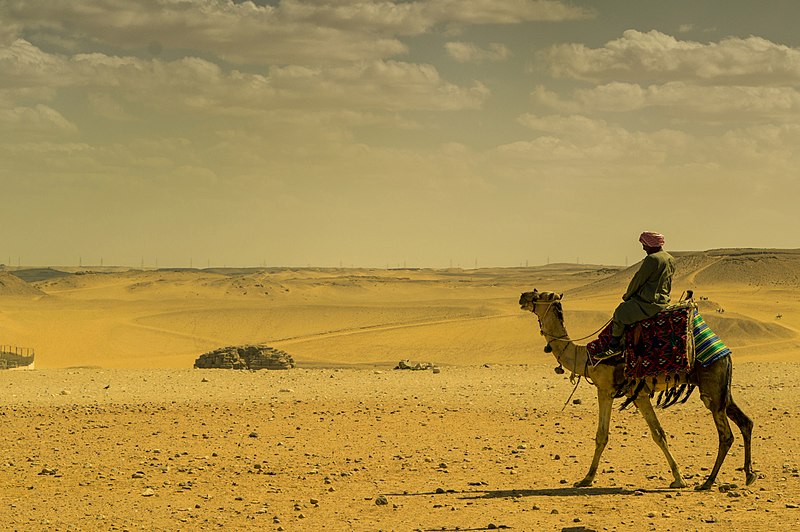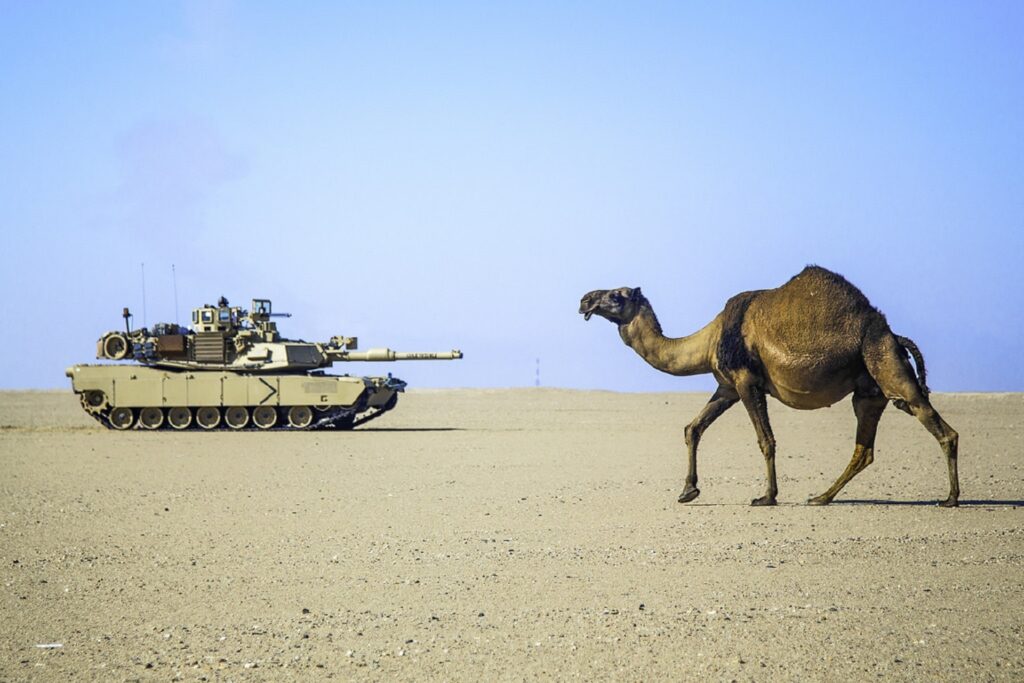
Both camels and horses are among humans’ favorite domestic animals. Both horses and camels share some common characteristics along with some differences. Let’s explore those differences.
For centuries both horses and camels have been used for the same purposes- riding, loading goods, racing, pulling carts, and so on. So, there may be a general perception that these animals are the same at all levels. But this is not true, as both of them differs in factors like
- Intelligence
- Speed
- Cavalry
- Fitness
Here we have presented a compared study of the above-mentioned aspects of camels and horses. So, keep on reading to learn more on which one stands stronger in which aspect.
Camel vs Horse Intelligence
Undoubtedly both horses and camels are versatile. Both these animals are highly adaptable and great at understanding commands. But their level of intelligence varies.
Equine experts agree that horses have strong memories. They can remember complex sequences and patterns as well as understand verbal and non-verbal cues. However, camels have both- memories as well as thoughts. As per the experts, camels think a lot more than horses and love to be treated nobly.
That being said, it is interesting to note that much like humans, camels can hold a grudge for long. If angry at someone, camels can take revenge with kicks and bites. Other factors that prove that camels are among the most intelligent mammals include
- Their ability to cope with life in an arid climate
- Their love for music
- Their ability to apparently recognize the track of other camels in the desert
After everything being said, it is really hard to announce any winner in this specific aspect. Horses and camels are intelligent in their respective ways, given the fact that they have separate habitats, life conditions, working styles, etc.
Camel vs Horse Speed in Desert

Both camels and horses are known for their abilities to walk long distances. These animals have been used for centuries for transportation and exploration. But when it comes to speed, especially in the desert, they differ from each other.
Generally, camels run slower than horses, as they run at 25 mph compared to the 55 mph speed of the latter. In the desert, however, camels prefer to walk more than run. But if commanded they can kick their speed up to 40 mph and sometimes may even outrun horses.
| Scenario | Camels’ Speed | Horses’ Speed |
| General | 25 mph 40 mph (on sand) | 55 mph |
Camels can run faster on sand than horses because:
- They can stand blowing sand, which does not hamper their speed
- The wider hooves of camels help them run faster in the desert
However, there are different factors that may affect the speed of both horses and camels like health, diet, climate, etc. In certain scenarios, it has been found that well-trained camels can outrun badly trained horses or horses that are not in good shape.
Camel vs Horse Long Distance

Undoubtedly, camels and horses are reliable for transportation and riding. But, these animals differ in their capability of covering long-distance. Their speeds depend on the duration they run.
Camels are slower than horses. But when it comes to long-distance running, camels have better endurance than horses. Camels can run 7 mph to 10 mph for up to 18 hours, and up to 20 mph for 1 hour. However, the speed depends on the camels’ health and training status.
Due to their ability to last long on track, they are the most preferred mean of transportation on long desert trails. One of the biggest reasons they can do so is their ability to break down the fats of their humps into water and energy.
Are camels stronger than horses?
The strength of any animal depends on its physical status, environment, and the task at hand. That being said, there are few traits in camels that make them stand apart from others.
If we look at the load-bearing capacity of camels, then yes, they are stronger than horses. Camels can carry heavier loads, as compared to horses, and almost 40% of their body weight. The strength of camels can be better understood from the fact that in Iran, they are mounted with light cannons on their back as a form of mobile artillery called a zamburak.
| Camels | Horses |
| 170 to 270 kilograms Up to 700 kilograms (Arabian camels) | 181 kilograms |
| Rule: up to 40% of their body weight | Rule: up to 20% of their body weight |
Camels and horses belong to the category of the pack as well as draught animals. They both are domesticated for the purpose of riding, carrying goods, pulling vehicles, etc. However, the capacity of both the animals varies based on factors like health status, medical condition, training, etc.
Are camels friendlier than horses?
Humans have been using both these animals, for a long time, for various domestic purposes. Both camels and horses can be trained to serve purposes like carrying goods, riding, and so on.
There is no specific answer if camels are friendlier than horses. Both these animals are known for their calm demeanor and temperament. However, camels, if forced to do something or sense fear, can display the habit of spitting. Nonetheless, if handled gently and trained well, both camels and horses can be super friendly to humans.
Is it easier to ride a camel or a horse?

Camels as well as horses are known for their capacity to carry goods and humans alike. Both of them can be used to get transported from one place to another. But which one is easier to ride?
From the speed perspective, riding a camel is easier than a horse, as the former has a slower motion. Also, unlike horses, camels have to sit on the ground for humans to ride on their backs.
That being said, if you are a novice, riding a camel can be difficult. Also, once a camel starts walking, you must not pull your muscles to prevent any fall. You must remember that camel riding is different from a horse, as the saddle, riding technique, holding the bridle, etc. varies a lot.
What military advantages did the camel have over the horse?

Not only for domestic purposes but camels and horses are also used as a part of military forces. Their physical strength, as well as running abilities, make them excellent animals for warfare.
However, camels can be more advantageous than horses, as war animals, in certain environments like the desert.
| Advantages of Camels in Military |
| High adaptability in the arid climate |
| Can survive without food and water for long (up to 2 weeks without water) |
| Riding a camel gives a better view to the rider |
| Can carry heavier loads and walk at a slower pace with high endurance |
| Wider feet do not sink in the sand |
Camel regiment
Camel cavalries are common to be seen in desert areas and can be traced back throughout the history of Middle Eastern nations. They are used for their high adaptability in arid regions.
However, not only in the arid nations, camel regiment could be seen in other countries like the US. The United States Camel Corps was first used in the 19th century as an experiment by the United States Army. Camels were mainly used as beasts of burden on short supply trips to San Antonio.
However, by the end of 1963, no more camels were used as a part of the regiment in the US. They were moved to Los Angeles, where they were put up for auction.
Why are camels effective against cavalry?
Camels are used in armed forces mainly as means of transportation. Sometimes, soldiers fight from the camelback with rifles, bows, etc. Camels in warfare have some advantages against horse cavalry.
Camels are common elements of war mainly in arid regions due to their high adaptability. They perform and survive better in waterless environments (deserts mainly) than horse cavalry. To be more specific, camels are effective against horse cavalry because:
- Of high endurance
- Speed up to 40 mph in desert
- More strength than horses
- Huge load carrying capacity
- Woolly coat, which insulates them against heat and cold of deserts
FAQ:
Are camels smarter than horses ?
Camels and horses possess unique intelligence suited to their respective environments. While horses exhibit exceptional learning abilities and are known for their obedience and adaptability, camels showcase remarkable problem-solving skills and adaptability in extreme conditions, making them highly intelligent in their own right. Both animals display remarkable instincts and capabilities in their own ways.
Are Camels Faster Than Horses
Camels are not faster than horses. Although camels are known for their endurance and ability to travel long distances, horses are generally faster in terms of speed. Horses can reach higher top speeds and are commonly used in racing and equestrian sports.
Are Camels Bigger Than Horses
Camels are known to be larger than horses in English. In terms of size, camels generally surpass horses, with an average height of 6-7 feet at the shoulder, while horses stand at an average height of 4.5-6 feet. Furthermore, camels possess a distinctive humped back, which adds to their overall size and stature. Their body mass also tends to exceed that of horses, with an average weight range of 900-1,600 pounds for camels and 900-2,200 pounds for horses. This comparison highlights the prominent physical differences between camels and horses, confirming that camels are indeed bigger than horses in the English language.
Camel Vs Horse Size
Camels are typically much larger than horses, both in height and weight. While horses generally range from 14 to 17 hands high and weigh between 900 to 2,200 pounds, a fully-grown camel can measure up to 6 feet tall at the shoulder and weigh between 900 to 1,600 pounds. Camels’ larger size is attributed to their adaptation to desert environments, allowing them to store water and survive in extreme conditions.




